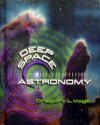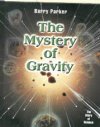Strange Universe: The Stuff of Darkness Additional Information
Sohn, Emily. 2003. The mirror universe of antimatter. Science News for Kids (Oct. 15).
Available at http://www.sciencenewsforkids.org/2003/10/the-mirror-universe-of-antimatter-2/.
______. 2003. A galaxy far, far, far away. Science News for Kids (April 16). Available at http://www.sciencenewsforkids.org/2003/06/a-galaxy-far-far-far-away-3/.
______. 2003. Phantom energy and the big rip. Science News for Kids (March 12). Available at http://www.sciencenewsforkids.org/2003/07/phantom-energy-and-the-big-rip-3/.
Learn more about the universe at starchild.gsfc.nasa.gov/docs/StarChild/universe_level1/universe.html (NASA) and about dark matter at starchild.gsfc.nasa.gov/docs/StarChild/shadow/universe_level2/darkmatter.html (NASA).
You can learn more about the Big Bang, the expanding universe, and cosmology at kids.msfc.nasa.gov/News/1999/News-HubbleConstant.asp (NASA) and www.worldalmanacforkids.com/explore/space/cosmology.html (World Almanac for Kids).
News and images from the Hubble Space Telescope can be found at
(Space Telescope Science Institute).
Books recommended by SearchIt!Science:
 |
Deep Space Astronomy — Gregory L. Vogt
Published by Twenty-First Century Books/Millbrook Press, 1999.
Do you find information on outer space totally mind-boggling? This book presents the history of outer space as well as our current knowledge about it. It’s full of color photos and provides multiple examples to help you to visualize and understand the difficult concepts. |
 |
Close Encounters: Exploring the Universe with the Hubble Space Telescope — Elaine Scott
Published by Hyperion Books for Children, 1998.
For centuries, people have wanted to see the stars and beyond. But nothing has provided so clear a picture as the Hubble Space Telescope. With full color photos, this book takes you to Mars, Venus, and Saturn. Watch a star being born, a star dying, and see the “deepest ever” view of the universe. |
 |
The Mystery of Gravity — Barry Parker
Published by Benchmark Books/Marshall Cavendish, 2003.
What would have happened to the field of science if Isaac Newton had not watched an apple fall out of a tree? Newton may not have discovered the universal law of gravitation, and we might still not understand how gravity works. Find out how scientists such as Copernicus, Kepler, Galileo, and Einstein studied the mysterious force that holds us to Earth. Learn new theories about how the universe was formed. Discover what we know about gravity today, and what the future holds for our galaxy. |
Power Words
big bang The powerful explosion of a tiny, very hot object that contained all the matter in the universe. Scientists believe that the big bang was the first thing that
happened in the history of the universe, sometime between 12 and 18 billion years ago.
gravity An invisible force that pulls all objects toward each other. The more mass the objects have and the closer together they are, the stronger this force is. The gravity of the Earth pulls all objects toward the Earth’s center.
mass The amount of matter contained in an object. Mass is a measure of an object’s inertia or resistance to being moved.
supernova A gigantic explosion of a star. Supernovas occur when the inner part of a star collapses because the star has so much mass that its gravity pulls this material into its center. The energy released by the collapse of the star’s core causes its outer layers to explode. Supernovas can be 100 million times brighter than the sun.
Copyright © 2002, 2003 Houghton-Mifflin Company. All rights reserved. Used with permission.
